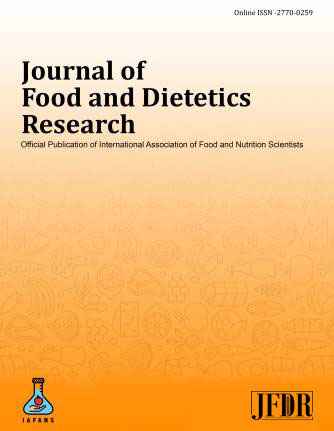Evaluating the effectiveness of a community-based intervention in changing the knowledge, attitude, norms, and practices related to anemia among adolescents in the selected blocks of the Gorakhpur district, Uttar Pradesh
DOI:
https://doi.org/10.48165/jfdr.2025.5.2.4Keywords:
Anemia, social norms, healthy eating, intentionsAbstract
Introduction: Adolescent girls are one of the most vulnerable groups for anemia. The high prevalence of anemia among adolescent girls is caused by various factors, including inadequate nutrition, gender disparities, poor sanitation and hygiene, and deeply rooted cultural and social norms. Therefore, anemia prevention and timely management require a broad, multi-dimensional approach that addresses these determinants. Objectives: The present study was conducted to assess the effectiveness of community-based intervention in improving knowledge, attitudes, practices, and norms among adolescent girls (15-19 years) in the selected blocks of the Gorakhpur district, Uttar Pradesh. Methods: A cross-sectional quantitative study was conducted in two intervention blocks (Khajani & Pipraich) of the Gorakhpur district. A baseline survey was followed by 5 months of intervention, after which an endline survey was conducted among unmarried adolescent girls (15-19 years). The baseline and endline surveys were conducted with a minimum of 400 adolescent girls. Moreover, the education intervention was conducted across 120-150 villages of the intervention district. The data were analyzed and presented as mean, and standard deviation (interquartile range), and frequencies (percentages) using STATA version 16.0. Results: The findings indicate a significant improvement in healthy eating intentions, perceived behavior control and social norms related to nutrition and anemia prevention from baseline to endline (p<0.05). We also noticed a statistically significant increase in knowledge, positive attitude, norms, and practices from baseline to end line. Conclusions: The present study suggests that community-based interventions are feasible strategiesfor improving aware ness, knowledge, attitudes, and behaviors among adolescents. Future interventions should incorporate components that target prevailing social norms, peer influence, and evidence-based behavior change strategies for sustainable outcomes. Keywords: Anemia, social norms, healthy eating, intentions
Downloads
References
Rahman, M. S., Mushfiquee, M., Masud, M. S., & Howlader, T. (n.d.). Association between malnutrition and anemia in under-five children and women of reproductive age: Evidence from Bangladesh Demographic and Health Survey 2011. PLOS ONE. https://doi.org/10.1371/journal.pone.0219170
Let, S., Tiwari, S., Singh, A., & Chakrabarty, M. (2024). Prevalence and determinants of anaemia among women of reproductive age in Aspirational Districts of India: An analysis of NFHS-4 and NFHS-5 data. BMC Public Health, 24, 437. https://doi.org/10.1186/s12889-024-17789-3
Ahluwalia, N. (2002). Intervention strategies for improving iron status of young children and adolescents in India. PubMed. https://pubmed.ncbi.nlm.nih.gov/12035848/
Sedlander, E., Talegawkar, S., Ganjoo, R., Ladwa, C., DiPietro, L., Aluc, A., & Rimal, R. N. (2021). How gender norms affect anemia in select villages in rural Odisha, India: A qualitative study. Nutrition, 86, 111159. https://doi.org/10.1016/j.nut.2021.111159
Das, B., Adhikary, M., Singha, S. R., & Parmar, D. (2024). Who is anaemic in India? Intersections of class, caste, and gender. Journal of Biosocial Science. https://doi.org/10.1017/S0021932024000245
U.S. Agency for International Development. (2023, October 5). Gender considerations for achieving nutrition outcomes through agriculture: Technical guidance brief. https://www.usaid.gov/gender-considerations-achieving-nutrition-outcomes-through-agriculture-technical-guidance-brief
Sharif, N., Das, B., & Alam, A. (2023). Prevalence of anemia among reproductive women in different social groups in India: Cross-sectional study using nationally representative data. PLOS ONE, 18(2), e0281015. https://doi.org/10.1371/journal.pone.0281015
Garg, R. K., Bala, J., Garg, P., P, S. S., M, J., R, V., Mudhol, B., & Mol, V. (n.d.). Cultural determinants in anemia prevention and management: Insights from women and caregivers. Indian Journal of Obstetrics and Gynecology Research (IJOGR). https://doi.org/10.18231/j.ijogr.2024.060
Sedlander, E., Rimal, R. N., Talegawkar, S. A., Yilma, H., & Munar, W. (2018). The RANI Project: A socio-normative intervention to reduce anemia in Odisha, India: A formative research protocol. Gates Open Research, 2, 15. https://doi.org/10.12688/gatesopenres.12808.2
Talegawkar, S., Jin, Y., Sedlander, E., Ganjoo, R., Behera, S., DiPietro, L., & Rimal, R. (2021). A social norms-based intervention improves dietary diversity among women in rural India: The Reduction in Anemia through Normative Innovations (RANI) Project. Nutrients, 13, 2822. https://doi.org/10.3390/nu13082822
Gore, M. N., Drozd, M. E., & Patil, R. S. (2024). Anemia prevalence and socioeconomic status among adolescent girls in rural western India: A cross-sectional study. Ethiopian Journal of Health Sciences, 34(1), 57–64. https://doi.org/10.4314/ejhs.v34i1.7
Mt, K., A, C., A, H., T, P., D, G., & C, E. (n.d.). Exploring associations between water, sanitation, and anemia through 47 nationally representative demographic and health surveys. PubMed. Retrieved April 9, 2025, from https://pubmed.ncbi.nlm.nih.gov/31232465/
Assessing the prevalence of iron deficiency anemia and risk factors among children and women: A case study of rural Uttar Pradesh. (n.d.). ScienceDirect. Retrieved April 9, 2025, from https://www.sciencedirect.com/science/article/pii/S2213398424000411
Puspitasari, H. Z. G., Armin, N. K. A., Pradanie, R., & Triharini, M. (2022). Anemia prevention behavior in female adolescents and related factors based on Theory of Planned Behavior: A cross-sectional study. Jurnal Ners, 17(1). https://doi.org/10.20473/jn.v17i1.27744
Agustina, R., Wirawan, F., Sadariskar, A. A., Setianingsing, A. A., Nadiya, K., Prafiantini, E., Asri, E. K., Purwanti, T. S., Kusyuniati, S., Karyadi, E., & Raut, M. K. (2021). Associations of knowledge, attitude, and practices toward anemia with anemia prevalence and height-for-age Z-score among Indonesian adolescent girls. Food and Nutrition Bulletin, 42(1_suppl), S92–S108. https://doi.org/10.1177/03795721211011136
Dahal, M., Basnet, A., Khanal, S., Baral, K., & Dhakal, S. (2022). Gender difference in food choice and eating practice and their association with health among students of Kathmandu, Nepal. Journal of Obesity, 2022, 2340809. https://doi.org/10.1155/2022/2340809
Observer Research Foundation. (2023). The role of gender equity in reducing malnutrition: The view from South Asia. https://www.orfonline.org/research/the-role-of-gender-equity-in-reducing-malnutrition-the-view-from-south-asia
United Nations Children’s Fund (UNICEF). (2024). Advancing gender equality for optimal nutrition in adolescent girls and women. https://www.unicef.org/documents/nutrition-gender-equality




